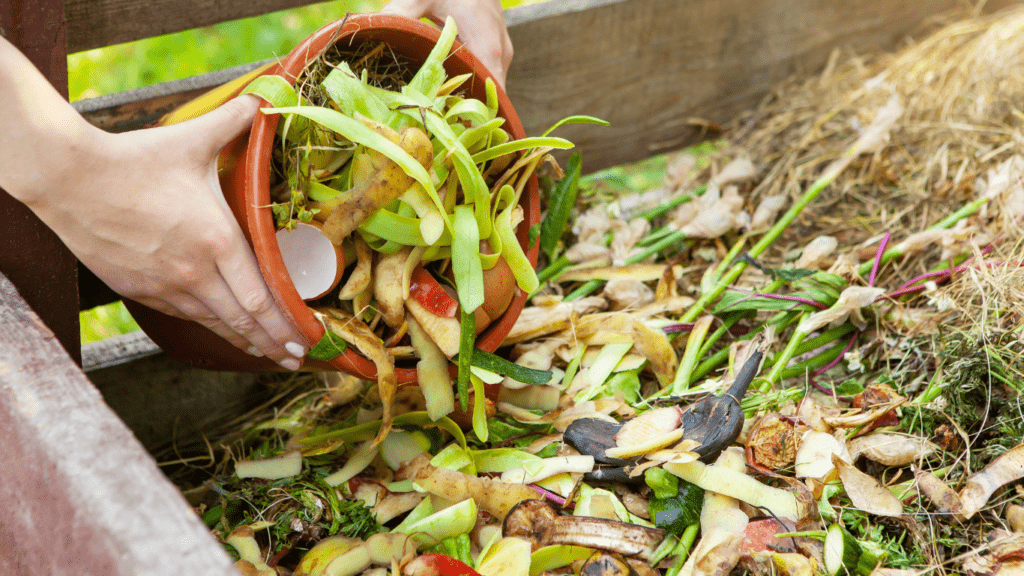Understanding Sustainable Gardening
Sustainable gardening balances environmental health, economic profitability, and social equality. It emphasizes eco-friendly practices that protect resources.
What Is Sustainable Gardening?
Sustainable gardening conserves water, reduces waste, and supports biodiversity. It uses organic fertilizers, composting methods, and native plants (e.g., milkweed, coneflower). These practices encourage a thriving ecosystem without harming wildlife.
Benefits of a Sustainable Garden
Eco-efficiency reduces resource consumption, lowering utility bills. Supporting local wildlife (e.g., bees, butterflies) helps maintain biodiversity. Health benefits include fresh, organic produce and reduced exposure to pesticides.
Key Components of a Sustainable Garden
A sustainable garden balances environmental health and economic profitability by using eco-friendly practices. Select the right plants and maintain soil health to create a thriving garden.
Choosing the Right Plants
Opt for native plants. Native plants (e.g., Coneflower, Black-eyed Susan) adapt to local conditions and require less water, reducing resource usage. Use drought-tolerant plants in arid climates.
Consider edible plants like tomatoes and herbs to support local food production. Avoid invasive species to protect local biodiversity.
Importance of Soil Health
Healthy soil is the foundation of a sustainable garden. Use organic compost to enrich soil and reduce chemical fertilizers. Composting kitchen scraps and yard waste creates nutrient-rich soil.
Implement crop rotation annually to prevent nutrient depletion. Grow cover crops (e.g., clover, peas) to improve soil structure and fix nitrogen levels. Test soil pH every few years and adjust using lime or sulfur for optimal plant growth.
Water Management in Sustainable Gardening
Proper water management is crucial in a sustainable garden. It reduces waste, conserves water, and ensures plants thrive. Here are effective strategies to manage water efficiently.
Efficient Watering Techniques
Drip irrigation systems deliver water directly to plant roots, minimizing evaporation and runoff. Soaker hoses work similarly, releasing water slowly along their length.
Mulching retains soil moisture and reduces the need for frequent watering. Applying mulch around plants keeps soil cool and prevents water loss. Watering in the early morning or late evening maximizes absorption and reduces evaporation.
Using Rainwater and Greywater
Collecting rainwater in barrels provides a free, sustainable water source. Rainwater harvesting systems store precipitation for later use, reducing dependence on municipal water.
Greywater recycling involves reusing household wastewater from sinks, showers, and laundry. After minimal treatment, greywater can irrigate non-edible plants. Utilizing rainwater and greywater decreases overall water usage and promotes sustainability.
Utilizing Organic Matter and Composting
Utilizing organic matter and composting transforms waste into valuable, nutrient-rich soil. This practice is essential for a sustainable garden.
Composting Basics
Composting converts kitchen scraps and yard waste into humus. Start with a compost bin or heap in a shaded, dry spot. Add materials in layers, balancing greens (food scraps, grass clippings) and browns (dry leaves, straw).
Turn the pile weekly to aerate it. The compost’s ready when it’s dark, crumbly, and has an earthy smell, usually within 3-6 months depending on conditions. Use the compost to enrich garden soil, boosting plant health and reducing waste.
Natural Fertilizers and Their Benefits
Natural fertilizers improve soil quality without synthetic chemicals. Examples include compost, manure, bone meal, and fish emulsion. These fertilizers enhance soil structure, increase nutrient content, and promote beneficial microorganisms.
Manure supplies nitrogen, while bone meal provides phosphorus, and fish emulsion offers a balanced nutrient mix. Natural fertilizers improve long-term soil health, support microbial activity, and contribute to a sustainable ecosystem.
Designing Your Sustainable Garden
Creating a sustainable garden involves thoughtful planning and strategic choices. Let’s delve into two key aspects that can help achieve this objective: biodiversity and permaculture principles.
Planning for Biodiversity
Biodiversity promotes a resilient ecosystem within your garden. Start by including a variety of plants, such as:
- native species
- wildflowers
- shrubs
- trees
Native plants, for instance, are adapted to local climates and need less water. Using companion planting, like putting marigolds near tomatoes, can reduce pests naturally.
Include plants that attract beneficial insects like bees and ladybugs. These insects help with pollination and pest control. Use different layers, such as canopy, understory, and ground cover, to mimic natural habitats.
This creates niches for various organisms and enhances ecological balance. Ensure water features, like a small pond, to support amphibians and aquatic plants.
Integrating Permaculture Principles
- Permaculture focuses on sustainable and self-sufficient agricultural ecosystems.
- Design garden zones based on how often you’ll interact with them.
- Place frequently used plants, like herbs, close to your home.
- Use natural resources, recycling waste and capturing rainwater.
- A rain barrel can collect runoff, reducing water wastage.
- Embrace no-till gardening to preserve soil structure and health.
- Instead of tilling, use mulch to suppress weeds and retain moisture.
- Cultivate perennial plants, which require less maintenance and provide long-term yield.
- Avoid monoculture by diversifying plant species, enhancing resilience against diseases.
- Establish guilds of plants that support each other, like a combination of fruit trees, nitrogen-fixing plants, and deep-rooted plants, to create balanced ecosystems.
Maintaining Your Garden Sustainably

Implementing sustainable practices in garden maintenance boosts plant health and promotes a balanced ecosystem.
Pest Management Naturally
Controlling pests organically relies on various approaches. Introduce beneficial insects, like ladybugs and lacewings, which prey on harmful species such as aphids and caterpillars.
Encourage natural predators by planting flowers that attract them. Use neem oil and insecticidal soaps as non-toxic options for pest control.
Hand-picking larger pests like slugs and beetles reduces the need for chemical interventions. Finally, introduce barriers, like copper tape for slugs, to prevent pests from reaching plants.
Regular Garden Care Tips
Consistent care sustains a healthy garden. Mulch garden beds to retain moisture and suppress weeds, using organic materials like straw or wood chips.
Rotate crops annually to prevent soil depletion and reduce pest buildup. Compost kitchen and garden waste to create nutrient-rich soil amendments.
Practice no-till gardening to maintain soil structure and enhance beneficial microorganism populations. Regularly prune plants to encourage growth and remove diseased parts, which maintains plant health.
 Heather Smithkers - Innovative Eco-Author at Green Commerce Haven
Heather Smithkers is a creative and forward-thinking author at Green Commerce Haven, where she brings a unique perspective to the world of sustainability. With a flair for storytelling and a deep commitment to environmental advocacy, Heather crafts engaging content that resonates with eco-conscious readers. Her work delves into the latest trends in green startups, organic products, and sustainable living, offering fresh insights and practical advice. Heather’s innovative approach to writing helps demystify complex environmental topics, making them accessible and inspiring to a broad audience.
Heather Smithkers - Innovative Eco-Author at Green Commerce Haven
Heather Smithkers is a creative and forward-thinking author at Green Commerce Haven, where she brings a unique perspective to the world of sustainability. With a flair for storytelling and a deep commitment to environmental advocacy, Heather crafts engaging content that resonates with eco-conscious readers. Her work delves into the latest trends in green startups, organic products, and sustainable living, offering fresh insights and practical advice. Heather’s innovative approach to writing helps demystify complex environmental topics, making them accessible and inspiring to a broad audience.
